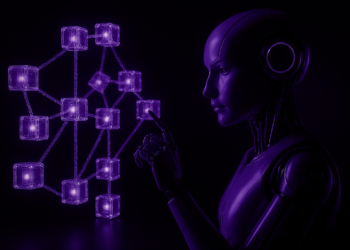An API allows two software or applications to share data. In this post, we’ll define what an API is, and what its typologies, functioning, and usage are. Knowing what an API is, or how to create and use one, are often prerequisites in developer job offers nowadays.
So, what exactly is an API, how does it work, and why do we use some? This post will give you all the answers.
1. What Is an API?
The acronym API stands for Application Programming Interface, which means it’s an interface which allows applications to communicate with each other, and to request information from softwares and external services.
API is sometimes mistaken for being a database or a server. If we want to give a more detailed explanation, an API is actually the code that grants access points to particular server, and therefore to targeted data and functionalities.
2. What Are the Different Types of APIs?
An API is located at the intersection between a server, which holds some data, and a software looking for those same data. It allows a connexion to, and a transfer of information.
There are several types of APIs. Depending on its usage, we can choose among:
- An external or public API, accessible to people outside the enterprise (Google Maps is a good example)
- An internal or private API, only accessible to developers working inside the enterprise
- A partner API, accessible to some people outside the enterprise, but only with exclusive authorizations For the web, we’ll often hear of API REST (or RESTful), as they are functional with every language (for example: JavaScript or Python), they can be deciphered by a human or a machine, and they’re the warrants of a better web integration. For a deeper understanding, short training modules exist and allow you to quickly get the basics about the functioning of such APIs.
3. How Does an API Work?
An API will showcase a list of applications the developer will be able to use, as well as a description of tasks those apps can run.
The developer has to type in some requests while respecting some precise documentation on the usage framework of that particular API.
To understand its functioning, let’s picture it with a concrete example. Let’s say our application is a meal delivery app. This app uses services from external apps through an API, such as localisation and delivery tracking through Google Maps, or billing through Apple Pay.
The delivery application therefore uses quite often services from APIs of two different external enterprises.
In practice, the delivery application doesn’t need to know how Google Maps actually locates the meal, nor how Apple Pay does the bank transaction itself: Providers of those services are the ones making sure it works. Developers, on their side, only need to integrate those functionalities into their own application.
On the user’s side, the operation is fully transparent, as everything goes technically through the same application.
The transferred data are usually important, sometimes highly confidential, and it’s therefore primordial to look into the security aspect of APIs to avoid potential attacks. Public APIs are the ones holding the highest risks due to their definition: They grant external people access to data.
Some expert groups or API evangelists discuss those security matters on a regular basis and organise technical conferences to explain with concrete cases.
4. Why Using an API?
Often developed in agile mode, APIs allow developers to gain a huge amount of time, to decrease the needed quantity of code, and even to provide more coherence between the different applications. The developer can therefore add many new services thanks to existing functionalities developed by other enterprises.
And saving time also means saving money.
Indeed, APIs can also have a huge financial impact on some enterprises: With those services they develop and provide external enterprises with, they create important business leverages.
For example, social network enterprises create APIs and often share data publicly. On a general basis, every organisation (government-based, small- or middle-sized, start-up) collecting data could find it interesting to make those date accessible and usable by another enterprise. This is made possible precisely thanks to APIs.
Do you need help with the setup of a tech or agile project?
In summary:
API stands for Application Programming Interface, which means it’s an interface which allows applications to communicate with each other, and to request information from softwares and external services.
It is a client-server architecture used by software developers, among others. It makes the development of applications easier and allows organisations to save time and money.












